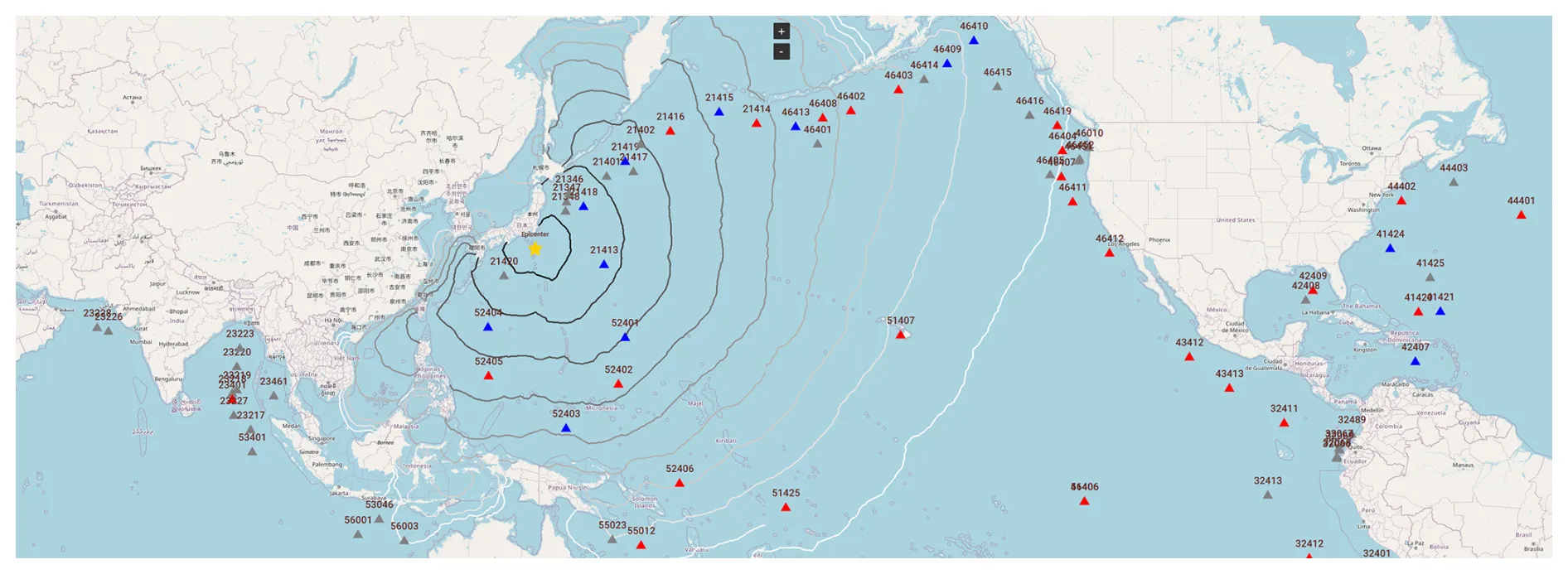Currently, space technology is profoundly transforming our understanding and management of the planet. With the rise of satellite technologies, the world is entering a new era of data collection and strategic decision-making based on precise, high-resolution information. In this context, India has begun to stand out as a key player in space exploration and, especially, in creating new opportunities within the commercial satellite market.
As the private space industry expands, new companies are emerging to compete globally. Among them is Pixxel, a promising tech startup backed by giants like Google, making a significant milestone with the launch of its first hyperspectral satellites from Vandenberg Space Force Base in California.
This launch, scheduled for Tuesday, January 13, is much more than a technological advance for Pixxel; it also marks the beginning of a new era for India's private space sector, an emerging market with enormous growth potential. With strategic support from the Indian government and a clear business vision, Pixxel is set to become one of the key players in the global satellite imaging landscape, especially with the innovative approach of its hyperspectral satellites.
Pixxel: India’s first major hyperspectral launch
The launch of Pixxel's first three hyperspectral satellites is a crucial step toward establishing an advanced satellite constellation that promises to offer one of the most detailed Earth observation networks in the world. These Pixxel satellites will be launched into a sun-synchronous orbit approximately 550 km above the Earth's surface, allowing them to provide high-resolution images across a broader range of wavelengths from the electromagnetic spectrum.

This capability of Pixxel translates into a much more detailed amount of data compared to traditional satellites, which generally operate in only a few bands of the electromagnetic spectrum. The hyperspectral images generated by these Pixxel satellites have the potential to transform key industries.
For example, in agriculture, this technology can revolutionize crop monitoring by enabling a precise assessment of their health and detecting issues before they become visible to the naked eye. In the mining sector, the detailed images provided by Pixxel can improve exploration and mineral extraction methods, offering precise data that optimize exploitation processes and minimize environmental impact. Additionally, in environmental monitoring, Pixxel's hyperspectral satellites can be crucial for the early detection of natural disasters such as wildfires, oil spills, and other environmental crises.
This launch is not only an advance for the company Pixxel but also for India's private space sector, which is still in its early stages of development. While India has achieved impressive milestones in space exploration through ISRO (Indian Space Research Organization), its participation in the global commercial satellite market has been relatively limited, with only a 2% share.
However, the Indian government has set an ambitious goal: to increase the size of the space sector from $8 billion to $44 billion by 2030. Companies like Pixxel play a key role in this plan, not only helping India increase its market share but also positioning itself as a leader in the global space revolution.
An innovative technology: Hyperspectral imaging
One of Pixxel's main competitive advantages is its use of hyperspectral imaging technology, which represents a key innovation within the space industry. Unlike traditional satellites, which usually capture information in only a few bands of the electromagnetic spectrum (primarily in the visible or near-infrared range), Pixxel’s satellites are designed to capture dozens or even hundreds of light bands, allowing for extremely detailed images of the Earth's surface.
This capability of Pixxel offers a much more precise representation of the elements that make up the planet's surface, opening up new possibilities for remote observation. The use of Pixxel's hyperspectral images has numerous applications across different sectors.
As mentioned, in agriculture, for example, Pixxel’s technology allows for monitoring crop health by identifying early signs of pests, diseases, or nutrient deficiencies, giving farmers the opportunity to make informed decisions before problems are visible to the naked eye. This not only improves crop yields but also optimizes the use of inputs such as fertilizers and pesticides, resulting in more sustainable agricultural practices.
In the mining sector, Pixxel’s satellites can provide detailed information about mineral resources, enabling precise monitoring of mines, optimizing extraction processes, and reducing the environmental impact of mining activities. Additionally, the ability to detect specific minerals through hyperspectral images is an invaluable tool for geologists and mining companies seeking to maximize the efficiency of their operations.
On the other hand, in environmental monitoring, Pixxel’s hyperspectral satellites have the capability to detect subtle variations in ecosystems, enabling the early detection of environmental problems. For example, the technology can identify changes in vegetation, which could indicate a wildfire or a shift in climate patterns. Additionally, Pixxel’s capability can be used to track the health of water resources and air quality, which is crucial in the fight against climate change.
The challenges of the global satellite market
Despite the enormous potential of Pixxel's satellites, the company faces significant challenges on its path to expansion in the global satellite imaging market. Competition in this sector is fierce, with giants like SpaceX and China dominating the global launch and commercial satellite market.
For example, SpaceX has a robust launch infrastructure, with its fleet of Falcon rockets and its expanding Starlink satellite network. Similarly, China has developed impressive space capabilities, with a national space program that has been growing rapidly in recent years.
However, Pixxel has a key advantage over its competitors: its hyperspectral satellites offer much higher resolution and broader coverage compared to other players in the market, such as Kuva Space (Finland) or Orbital Sidekick (San Francisco).

Pixxel’s satellites are designed to provide images with a resolution of 5 meters and a swath width of 40 kilometers, allowing them to capture a large amount of data in a single pass. This advantage could be decisive in gaining a significant share of the satellite imaging market.
Pixxel's Expansion: More Satellites to Conquer the Market
Although Pixxel has started with six satellites, the company has ambitious plans to expand its satellite constellation. According to Awais Ahmed, CEO of Pixxel, the company plans to add 18 additional satellites in the coming years, which will significantly increase its capacity to cover more areas and offer higher-resolution images. This expansion will allow Pixxel to compete directly with the larger players in the satellite imaging market, offering not only greater coverage but also superior data quality.
Pixxel's Firefly constellation is key to this expansion. The Firefly satellites are designed to capture detailed, real-time images, enabling the company to offer customized solutions for sectors that rely on Earth observation, such as natural resource management, deforestation monitoring, and climate condition tracking.
As Pixxel increases the number of satellites in its network, the company will be able to cover more areas, offer higher resolution, and provide even more precise data for its clients. Additionally, Pixxel has managed to secure a set of prestigious clients, such as Rio Tinto, British Petroleum, and the Ministry of Agriculture of India.
These agreements are proof of the value that large corporations and governments see in Pixxel's technology and demonstrate that the company is on the right path to becoming a global player in the space sector.
The Satellite Imaging Market: Projections and Opportunities
The global satellite imaging market is booming, and it is expected to reach a value of $19 billion by 2029. According to Awais Ahmed, hyperspectral imaging technology has the potential to capture between $500 million and $1 billion from this growing market. This is due to the increasing demand for satellite data to make informed decisions across a wide range of industries, such as agriculture, natural resource management, defense, and mining.
Additionally, Pixxel benefits from a parallel, constantly expanding market: satellite data analytics. While the satellite imaging market is valued at approximately $4.3 billion, the market for analyzing this data is valued at an additional $14 billion. This means that, in addition to revenue generated from selling images, Pixxel also has the opportunity to monetize the analysis and interpretation of the data collected by its satellites.
Implications for India’s Space Industry
Pixxel’s success not only benefits the company but also has important implications for India’s space sector. While India has made impressive strides in rocket development and space missions through ISRO (Indian Space Research Organization), the country remains a small player in the global commercial satellite market, with only a 2% market share. To change this situation, the Indian government has begun to encourage private sector participation in the space industry, aiming to double the size of India’s space sector by 2030.
Pixxel’s success, coupled with government support, could mark the beginning of an era where India becomes a global leader in the space industry, especially in the satellite imaging market. As Pixxel continues to grow and gain customers, other startups in India could also seize the opportunities offered by the global space market, contributing to the country’s economic development and technological growth.
Contribution to Global Challenges
Pixxel’s Firefly satellites have significant potential to address urgent global challenges such as natural resource management, climate change monitoring, and food security. The accurate data provided by the satellites can contribute to more effective solutions to problems like water scarcity, deforestation, and biodiversity loss. With a focus on the early detection of natural disasters and improving sustainable agricultural practices, Pixxel could play a key role in creating a more sustainable future.

In summary, the launch of Pixxel's hyperspectral satellites not only marks a technological milestone for the company but also represents the beginning of a new era for India’s space sector. This advancement positions Pixxel as a key player in the global satellite imaging market, with the ability to directly compete with giants like SpaceX and China’s space powers.
Through its innovative hyperspectral imaging technology, Pixxel is opening new opportunities not only for Earth observation but also for environmental monitoring, natural resource management, and food security, among others. With the support of the Indian government, which has started encouraging private sector participation in the space industry, Pixxel stands as a model of success and a reference for other startups in the country.
This Pixxel model demonstrates that, with vision and cutting-edge technology, India can establish itself as a global leader in the field of space observation—a sector that until recently seemed dominated by countries with more established infrastructures.
However, Pixxel’s impact goes far beyond its economic potential or its ability to compete with international giants. The true magnitude of Pixxel's contribution lies in how its technology can help address some of the most pressing challenges of the 21st century, such as climate change, natural resource management, and food sustainability.
With satellites capable of providing precise, real-time data on ecosystems, water, crops, and weather patterns, Pixxel is proving that space technology plays a crucial role in making informed decisions that not only drive the global economy but also help preserve our planet for future generations.
In this sense, the true potential of Pixxel is not only measured by its commercial success but by how it contributes to global well-being, demonstrating that technology, when applied with a clear and responsible purpose, can be a powerful tool to create a more sustainable and connected future. If you want to learn more about Pixxel’s innovations and how they could affect your business operations, write to us at [email protected]. We have a team of experts ready to advise you and keep you at the forefront of technology.





